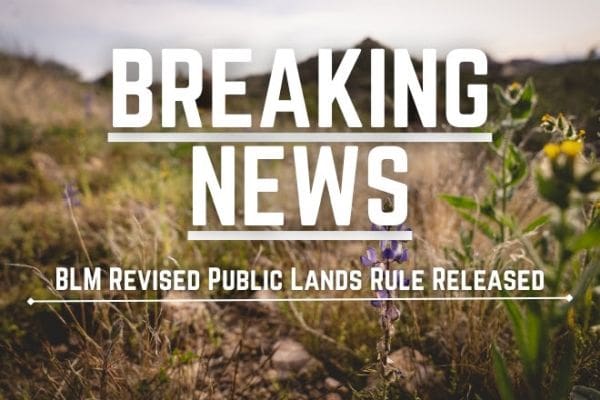Emphasizing conservation and wider public access across 245 million acres
Today, the Department of the Interior released its much-anticipated Public Lands Rule, creating a conservation leasing mechanism for Bureau of Land Management (BLM) acres. The new rule prioritizes healthy landscapes, abundant wildlife habitat, clean water, and balanced decision-making at the forefront of public lands management decisions. Pheasants Forever (PF) and Quail Forever (QF) applaud agency leaders for creating a tool to carry out durable restoration and mitigation on America’s 245 million BLM acres, including landscape-level projects for upland birds and other wildlife.
“Our public lands provide wildlife habitat and clean water, the energy that lights our homes, the wood we build with, and the places where we make family memories,” said BLM Director Tracy Stone-Manning. “This rule honors our obligation to current and future generations to help ensure our public lands and waters remain healthy amid growing pressures and change.”
“While we haven’t yet had a chance to read the newly final Public Lands Rule in its entirety, we applaud BLM’s innovative approach to elevating conservation in its land management decisions, and we’re excited for the opportunities the rule may create to help PF & QF deliver our habitat mission on lands across the West,” stated Ariel Wiegard, PF & QF’s vice president of government affairs. “Our organization is also looking forward to partnering with other BLM land users, including in the livestock and energy sectors, to bring this rule to life and ensure the long term sustained yield of America’s natural resources.”
Building on decades of land management experience and emphasizing the use of science and data, including Indigenous Knowledge, to guide balanced decision-making, the rule applies the existing fundamentals of land health across BLM programs, establishes restoration and mitigation leases, and clarifies practices to designate and protect Areas of Critical Environmental Concern (ACECs). The rule will help to ensure the BLM continues to protect land health while managing other uses of the public lands, such as clean energy development and outdoor recreation. The final rule:
- Directs BLM to manage for landscape health
- Provides a mechanism for restoring and protecting our public lands through restoration and mitigation leases, while maintaining existing authorized uses including recreational access
- Clarifies the designation and management of ACECs
Under the new rule, The Habitat Organization also sees opportunities in nearly every western landscape to assist BLM with their identified restoration efforts, helping to meet restoration goals in BLM focal areas, while improving habitat for a wide array of upland birds and other wildlife.
“We look forward to using any flexibility provided through the revised Public Lands Rule for sagebrush restoration across western states,” added Al Eiden, PF & QF’s director of field operations for the West. “Specifically in Idaho on juniper invasion in the BOSH project area, on mesic restoration throughout the southern Idaho, and in addressing cheatgrass in southeastern Idaho. The organization would like to expand its efforts for removing barriers to wildlife movement and migration in Montana, Wyoming, Arizona, and New Mexico.”
About Pheasants Forever and Quail Forever
Pheasants Forever and Quail Forever make up the nation’s largest nonprofit organization dedicated to upland habitat conservation. This community of more than 420,000 members, supporters and partners is dedicated to the protection of our uplands through habitat improvement, public access, education and advocacy. A network of 754 local chapters spread across North America determine how 100 percent of their locally raised funds are spent — the only national conservation organization that operates through this grassroots structure. Since its creation in 1982, the organization has dedicated more than $1 billion to 580,000 habitat projects benefiting 26.5 million acres.
Read the full article here




